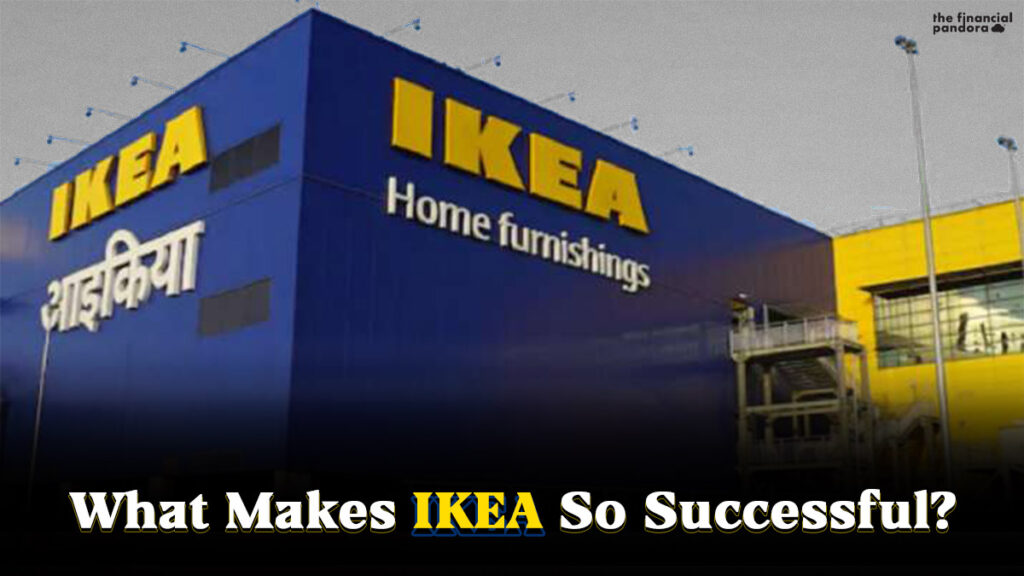“To design a desk which may cost $1,000 is easy for a furniture designer, but to design a functional and good desk which shall cost $50 can only be done by the very best. Expensive solutions to all kinds of problems are often signs of mediocrity.” – Ingvar Kamprad, Founder of IKEA.
With the launch of a physical store in Mumbai late last year, it’s no doubt that IKEA is set to capture a broad audience in India. The Swedish furniture company is expanding quickly in India with two stores in Hyderabad and Mumbai, along with further plans to launch in Bengaluru and Gurgaon. IKEA officials aim to reach 100 million Indian customers in 2022.
Since being founded in 1943, IKEA has become a household brand. In 2020, even when people were stuck indoors, IKEA managed to announce global retail sales worth over $40 Billion.
So what makes this Swedish furniture retailer so successful? It’s a combination of several brilliant business tactics.
Low Cost, High Quality
The brand’s signature style is low-cost self-assembling furniture that does not skimp on quality. This is what makes the business envious of its competitors.
Materials used in IKEA furniture are thoroughly described to ensure customers know exactly what they’re paying for.
One of the vital customer segments is frequent movers such as renters, students, and military families. The low cost is appealing to such people as it can be discarded without burning a massive hole in their pockets, considering they do not need to spend a lot on transportation or purchase of new expensive furniture.
With this kind of production, IKEA has achieved economies of scale, a feat not many brands in this area have been able to overcome.
Self-Assembling
When you hear the word IKEA, you immediately think of cheap self-assembling furniture. According to studies, you are likely to feel more attached to something if you had a hand in its creation. If you assembled the slab yourself, you feel connected to the item. This phenomenon where you feel more connected to your partially or wholly created products has been named the IKEA effect.
In 2017, IKEA acquired TaskRabbit, an on-demand platform to find people to assemble furniture for you. This route makes it easy for customers in the US who do not want to create the table themselves to finish the task at a discounted price. In India, the brand has partnered with Urban Company for the same purpose.
Store Layout
A trip to an IKEA store can genuinely be considered a family outing. The average size of a typical store is so large; one can easily spend an entire day in a store. With its vast layout with multiple divisions dedicated to different parts of your house, a day at IKEA isn’t just a fun day out; it’s an experience.
IKEA is so large and complicated; it has a map. The stores are designed so that you are led through the entire inventory (unless you take a shortcut). This phenomenon nudged you to spend more within the store.
During a stroll through the store, you see that the furniture isn’t typically organized product-wise but rather room-wise. You see mocks of what your ideal bedroom or kitchen might look like, which plays to your emotions and gives you the pleasure of discovery.
The IKEA Cafe
When you spend the entire day shopping, you are bound to get hungry. You might wrap up your shopping early to step out for lunch or abandon it altogether in case the lines at the checkout counters are too long. To avoid losing customers in this manner, every big box IKEA store has a cafe that serves delicious low-priced meals catered to fulfill the tastebuds of the people in the country the store is situated in. Through this, customers can take a break from shopping, refuel and get back to creating their dream home.
This tactic has resulted in IKEA selling over a million meatballs internationally. For a furniture retailer to sell food at this scale was unheard of a few years back. The meatballs are considered a classic, and some studies show people visit IKEA only for the food.
Logistics
Any furniture you buy from IKEA is shipped in a flat-pack. This makes it cheaper to transport and efficient to store products that are instantly ready to be shipped. This idea originated when one of the prominent IKEA executives was trying to export a table to a customer and could not fit the table in the vehicle. Out of frustration, he got the idea to remove the legs off the table, and thus, the concept of flat-packing was born.
The store can house large quantities of inventory at any given point in time because the retail store is effectively the warehouse itself. The warehouse has in-store logistics personnel to manage the inventory and efficiently support sales. They have a carefully designed approach to stock inventory, ensuring replenishment of products to balance demand and warehousing effectively.
Global Reach
IKEA has a global presence in over 30 countries. Since Sweden did not offer enough room for growth, the company had planned international expansion right from the get-go. Every store in the world has been customized to cater to the needs of the people in the country while ensuring they maintain their signature IKEA style. This is a very tough play in countries like India, which are the complete opposite of Sweden in terms of temperature, population, and house styles, among other factors.
As you can see, the brand has constantly been growing since 1943 and will only continue to do so. Right from the innovative idea to have a cafe in the store to the vibrant, colorful layout of the inventory, IKEA has succeeded in the once niche area of affordable yet beautiful furniture.
IKEA CEO Jesper Brodin has announced that by 2030, the brand aims not only to be climate-neutral but climate-positive! Sustainability is on top of the company’s list of goals, and there is no doubt that they will achieve it. With a growing presence in developing countries like India, IKEA is set to take over the world in furniture and household furnishings while simultaneously ensuring sustainability.
Follow Us @




